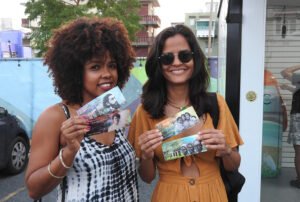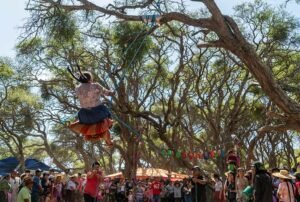
Diversity in the arts: It’s the hot issue of the moment. And thanks to changing opinions on issues like racial inequity among funders and large organizations, there’s been a powerful shift in the nonprofit arts world around diversity. To be a hip, forward-thinking, progressive arts leader now, your organization, too, must have a robust diversity initiative—at least if you want to be competitive for all the new funds being directed at cultural equity projects. The most common refrain I hear from well-meaning arts leaders for the rationale behind their newfound commitment to diversity is: We want to reflect the diversity of our community.
Now that’s a perfectly lovely, wholesome, feel-good statement. This kind of “diversity” thinking emphasizes demographic data of staff and audiences; it chases that perfect ratio of 37 percent people of color, 51 percent women, 10 percent (give or take) LGBT, etc.—the perceived national demography of the country—to inoculate the organization from criticism of being “Eurocentric” or “exclusionary.” However, it’s also completely toothless when it comes to actually addressing the structural oppression which prevents people of color, LGBT people, poor folks, disabled people, etc., from being able to fully and equally engage with, and to operate in, the arts sector.
Simply “reflecting” society only reinscribes the systems of oppression that exist within it. Focusing on the numbers game of diversity encourages tokenism, “trickle-down community engagement” and still centers straight, white, male, cisgender people at the core of every programmatic and financial decision of an organization.
Sign up for our free newsletters
Subscribe to NPQ's newsletters to have our top stories delivered directly to your inbox.
By signing up, you agree to our privacy policy and terms of use, and to receive messages from NPQ and our partners.
Instead of focusing on how to make our organizations reflect our community, what if we found ways for our organizations to be more accountable—or accountable, period—to the communities we serve? Accountability can take many forms: form an advisory committee made up of community members for artistic programming; pay the people doing your community outreach; open a dialogue with the public about your goals; ask the community to grade your performance/relevance; link cultural equity metrics to staff performance evaluation.
There are innumerable solutions to make organizations more equitable for people who are excluded from the arts. But the question I always use as a compass when figuring out if my decisions are creating more equity in the world is, “Who has the power in this situation?” If the answer is not “the people,” then I know I’m heading in the wrong direction.
This article was presented in its original form on The Clyde Fitch Report blog on August 8, 2016.













